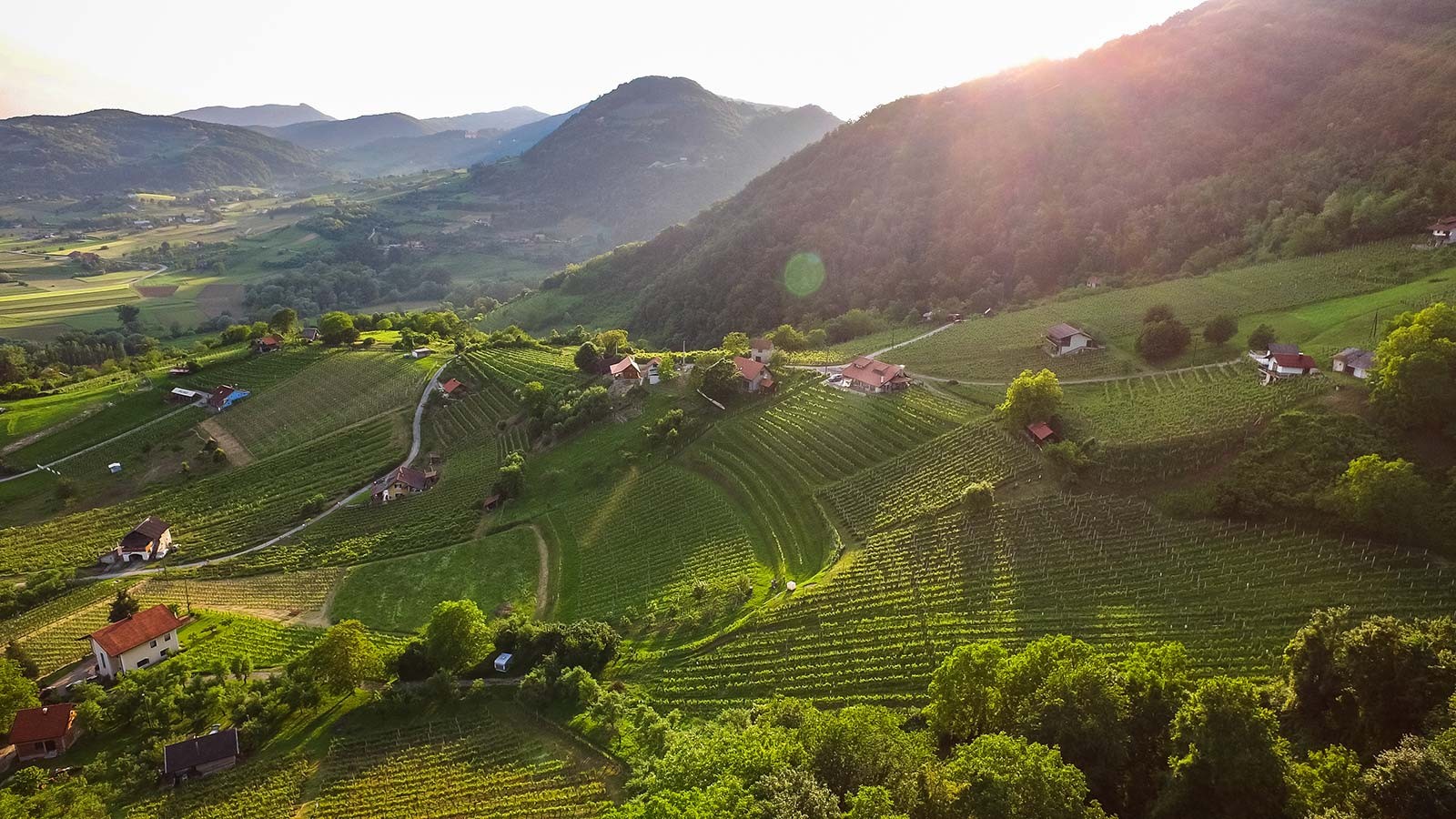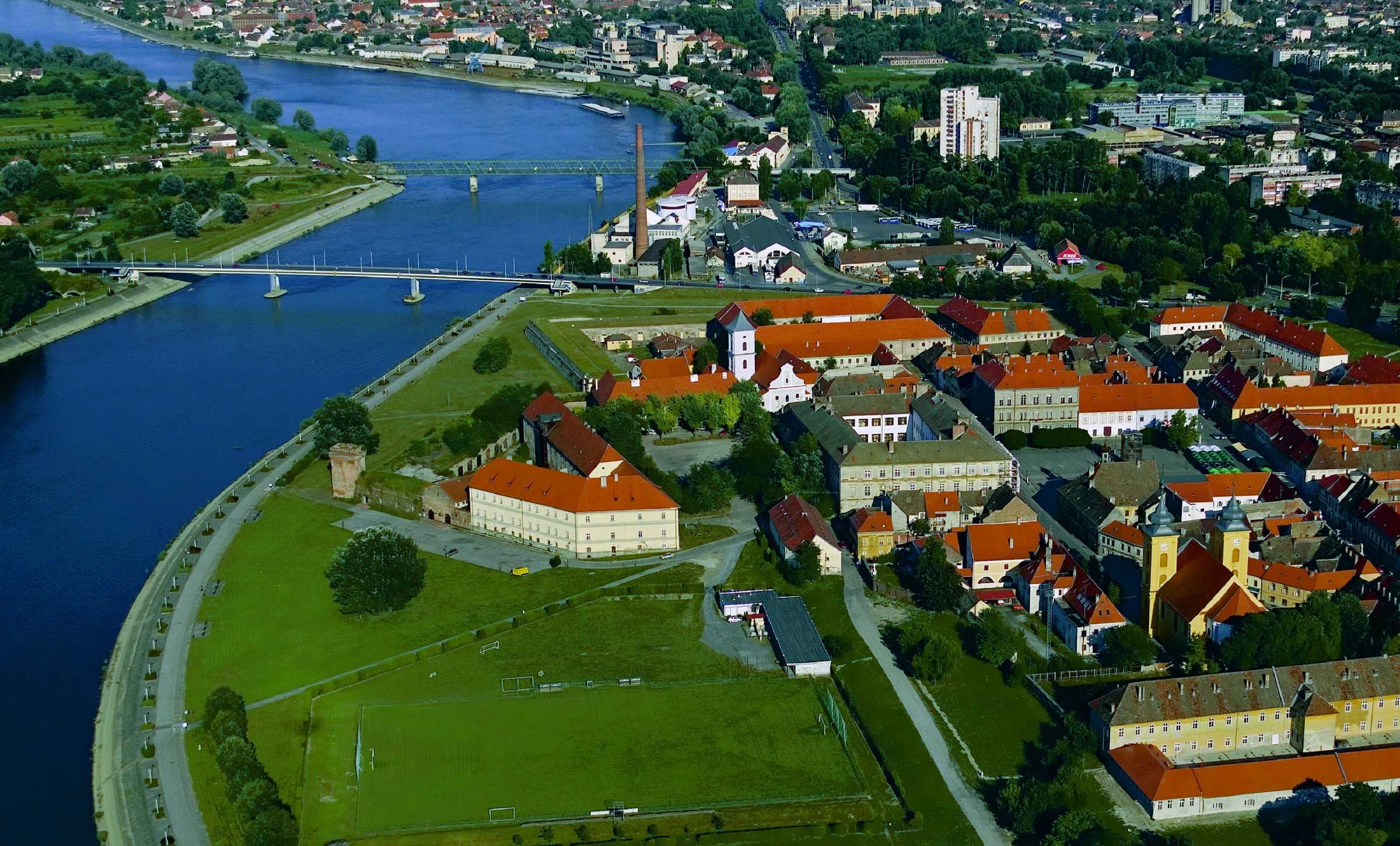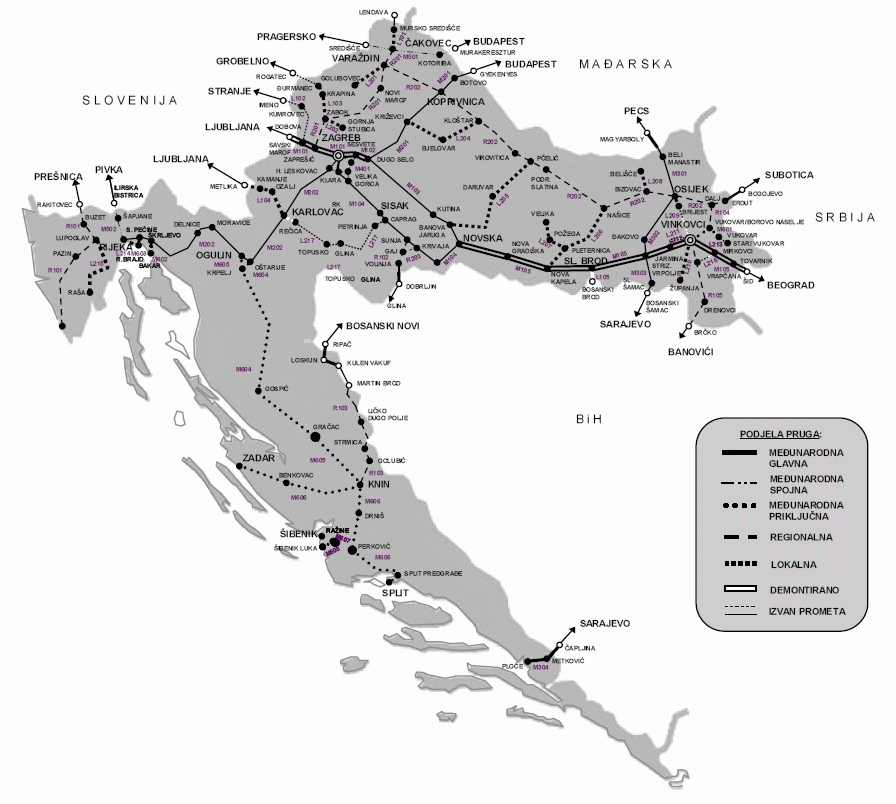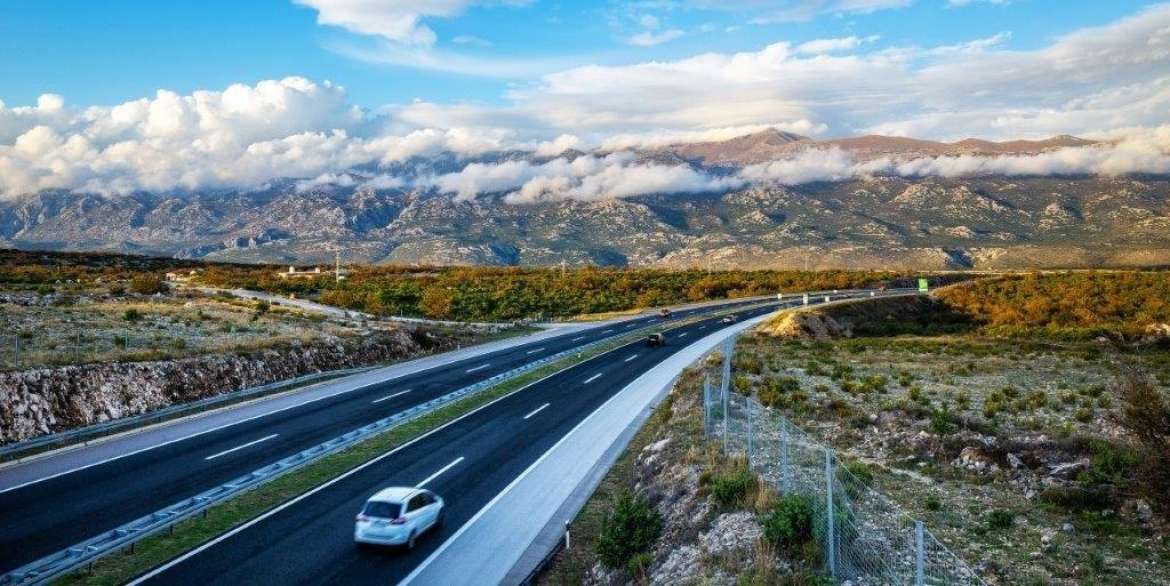Strike at HŽ Infrastruktura Railway Company Called Off
ZAGREB, 24 March, 2021 - Three representative railway workers' unions whose members are employees of the HŽ Infrastruktura railway company have called off a strike announced for noon on 25 March after reaching a compromise solution and signing a new collective agreement with the employer.
The leader of one of the three unions, Mario Grbešić, told Hina that the dispute with the employer had been about two provisions, one being a non-taxable wage supplement and the other meal allowances.
"An agreement has been reached concerning these two issues in a satisfactory way. One will be implemented immediately and the other will be in force as of 1 January next year," Grbešić said.
Under the new collective agreement, to be in force from 1 April this year until 30 June 2022, as of 1 April workers have the right to a HRK 416 non-taxable wage supplement each month.
As of 1 January 2022, workers will receive a meal allowance of HRK 1.30 per each working hour.
They will also receive an Easter bonus of HRK 500, holiday pay of HRK 1,300 and a Christmas bonus of HRK 1,200.
The three unions that were planning to strike represent railway workers, train dispatchers and railway infrastructure workers.
The previous collective agreement expired on 28 February.
The unions further expressed their willingness to postpone negotiations on the cost of labour until the last quarter of this year considering the economic situation caused by the coronavirus pandemic and last year's earthquakes.
For more about politics in Croatia, follow TCN's dedicated page.
EU Money for Modernisation of 95 Croatian Level Crossings Coming
January the 28th, 2021 - EU funds have proven an excellent resource for Croatia, with numerous previously planned projects being given the proper means of financing to get them from documentation stage to fruition. Over 90 Croatian level crossings are next in line to receive an EU cash injection.
As Poslovni Dnevnik/Darko Bicak writes, HZ Infrastruktura (Infrastructure) (HZI) is embarking on a major project involving the reconstruction and modernisation of 94 Croatian level crossings (railway) and one pedestrian crossing across he country, the total value of the work stands at 208.7 million kuna.
Most of it will be provided through European Union funds, on which an agreement was signed a couple of days ago between the Ministry of Maritime Affairs, Transport and Infrastructure, HZ Infrastruktura and the Central Agency for Financing and Contracting. As much as 142.6 million kuna is coming directly from EU funds, and the rest will be provided from the Croatian state budget.
As has since been explained by HZI, this project aims to increase safety at Croatian level crossings and consequently reduce the overall number of potential traffic accidents.
Most of the Croatian level crossings that will be modernised are located in Bjelovar-Bilogora, Pozega-Slavonia, Osijek-Baranja, Virovitica-Podravina and Varazdin counties.
Activities on the project include works and equipping all Croatian level crossings with automatic electronic signalling and safety devices that use light signals which boast LED technology and loud bells for safe traffic, while 79 crossings will be additionally equipped with half fenders.
As part of the project, the previously designed railway-road and pedestrian crossings along the railways will be further secured and equipped.
The relevant ministry has noted that this is the 68th project in the Croatian transport sector contracted through the Competitiveness and Cohesion Operational Programme, which brought the total value of all of the projects contracted through this programme up to an impressive eighteen billion kuna, most of which, twelve billion kuna, comes from EU funds.
For the latest travel info, bookmark our main travel info article, which is updated daily.
Read the Croatian Travel Update in your language - now available in 24 languages.
Continental Croatia Trains: Inland Opens Up With Green Travel
October 3, 2020 - With charter airlines in a state of flux and Croatia Railways beginning a renewal of their fleet in Slavonia, are continental Croatia trains the eco-friendly and best way to unlock the inland's amazing potential?
Everything changes. Nothing stays the same. Even before 2020 arrived, lifestyles and trends were headed in new directions. Eco-tourism and agro-tourism were two of the fastest-growing areas within the travel sector, this behaviour change a response to concerns about the environment. And nowhere in the country stands better poised to take advantage of this interest than continental Croatia. Impossibly pretty Zagorje - the region lies just north of Zagreb and is accessible by continental Croatia trains © Ivo Biocina / Croatia National Tourist Board
Impossibly pretty Zagorje - the region lies just north of Zagreb and is accessible by continental Croatia trains © Ivo Biocina / Croatia National Tourist Board
From the impossibly pretty hills of Zagorje, the peaceful rivers of Karlovac county and the hidden vineyards that surround the capital Zagreb to the vast Pannonian flatlands that stretch to Slavonia, Baranya, Vukovar-Srijem and beyond, the varied topography of continental Croatia is wild, exciting and - by many - wholly undiscovered.
This is land where agriculture and nature thrive side by side, where the stresses of modern-day existence ebb away as you readjust to a way of life that would look mostly familiar to the people who lived here centuries ago. These are places where you can truly be at one with yourself and with your surroundings. In continental Croatia, you often find yourself in an environment that is both timeless and traditional, yet wholly contemporary in regards to its ecological aspirations. And you're never far away from an exciting city environment that you can dip into on a whim – not just Zagreb, but Osijek, Slavonski Brod, Karlovac, Sisak and Varaždin too. To those who really know and love Croatia, Osijek is simply unmissable. It is both the capital of and the doorway to Slavonia and Baranya and should be more accessible by continental Croatia trains. Sadly, international transportation links to the city by air are also quite poor. Improvements in accessibility to Slavonia and Baranya by rail and road are imminent © Romulić & Stojčić
To those who really know and love Croatia, Osijek is simply unmissable. It is both the capital of and the doorway to Slavonia and Baranya and should be more accessible by continental Croatia trains. Sadly, international transportation links to the city by air are also quite poor. Improvements in accessibility to Slavonia and Baranya by rail and road are imminent © Romulić & Stojčić
Unlocking the incredible potential of continental Croatia relies on getting the message out there and facilitating travel to these regions
In recent TCN features we have detailed that motorways within Croatia are among the best in Europe - once you're inside Croatia, travelling by car (or bus) between the regions couldn't be easier. We have also seen evidence of the huge interest in travelling here by rail and using continental Croatia trains.
Of all the modern methods of long-distance travel, rail is by far the most eco-friendly. What better way to begin an environmentally friendly holiday than by arriving on continental Croatia trains? When the country wisely decided to prioritise its internal motorway system, a modern and fast inter-regional rail network was put on the back burner. Nowhere suffers greater from this decision than continental Croatia. The Croatian rail network © Croatian Official Document uploaded to Wikipedia by Epepe
The Croatian rail network © Croatian Official Document uploaded to Wikipedia by Epepe
The only high-speed line that currently exists in Croatia links Rijeka to Budapest, via Zagreb and Koprivnica. Planned improvements hope to cut journey times between Zagreb and its nearest coastal city to an hour. Same as it ever was - Rijeka was the first Croatian city to be connected internationally by rail. That line also ran into the heart of Austro-Hungary and facilitated upper-class travel to places like Opatija. But does it best benefit the country to invest in more links to the coast or in continental Croatia trains? Well, the inland is not being ignored. Upgrades are being made to continental Croatia trains. This impressive beast actually services the country's coast. But would more investment in the continental Croatia trains network better service more people and help unlock the inland to tourists? Around 70% of the country's inhabitants live in continental Croatia © HŽPP
This impressive beast actually services the country's coast. But would more investment in the continental Croatia trains network better service more people and help unlock the inland to tourists? Around 70% of the country's inhabitants live in continental Croatia © HŽPP
The rail link between Zagreb and Slavonski Brod is so historic that it was once part of the four routes of the Orient Express. It has been maintained to a standard where you can make a relatively quick journey from the capital to Vinkovci via Slavonski Brod. The same cannot be said for rail travel to Osijek, the access point to Baranya and much more. So slow is the connection between Osijek and Zagreb that it has been possible over recent times to reach the Slavonian capital quicker by taking the train to Vinkovci, then the bus to Osijek, rather than travelling direct by rail. Osijek train station. A renovation to the building is planned for the near future © Romulić & Stojčić
Osijek train station. A renovation to the building is planned for the near future © Romulić & Stojčić
However, in February this year, Croatian Railways introduced four direct daily lines between Slavonski Brod and Osijek. And there will be a new tilting train line that will run between Zagreb to Osijek on Friday afternoon and from Osijek to Zagreb on Sunday afternoon, facilitating student travel. On October 15, the first low-floor train will run between Osijek and Vinkovci as an additional part of the renewal of their continental Croatia trains fleet in Slavonia. The welcome return of Croatia's second-oldest international rail line - linking Osijek to Pécs in Hungary, via Beli Manastir and Baranya - was introduced in late 2018. A motorway stretch between Metković and Dubrovnik, integrating the Pelješac bridge and the Croatian segment of the European corridor are the final big remaining projects in a three-decade-long undertaking to give Croatia one of the best motorway networks in Europe. Should Croatia's rail network be next? © Hrvatske Autoceste
A motorway stretch between Metković and Dubrovnik, integrating the Pelješac bridge and the Croatian segment of the European corridor are the final big remaining projects in a three-decade-long undertaking to give Croatia one of the best motorway networks in Europe. Should Croatia's rail network be next? © Hrvatske Autoceste
Access to Slavonia and Baranya will also be massively facilitated upon completion of the European corridor, which will connect North Europe to the Adriatic. Starting in Budapest, it necessitates the building of a bridge near Beli Manastir. Thereafter the motorway will pass by Osijek, connect to the Zagreb-Slavonia motorway near Lipovac, then pass through Bosnia and its capital Sarajevo and on to Ploče.
The removal of budget airline flights to the airport in Osijek remains a hindrance to attracting many international visitors to Slavonia and Baranya. However, with charter airlines facing the greatest uncertainty of all modes of transport at the current time, though their return is a must, it is perhaps now an ambition that should remain more long term. For the immediate future, improvements to rail travel look to be a brilliant way of opening up not only Slavonia, Baranya and Vukovar-Srijem, but also an eco-friendly access point capable of serving the whole of untapped continental Croatia.
For the latest travel info, bookmark our main travel info article, which is updated daily.
Read the Croatian Travel Update in your language - now available in 24 languages
Croatia Given More Than 119 Million Euro to Purchase 21 Electric Trains
ZAGREB, March 17, 2020 - The European Commission on Tuesday approved the allocation of more than €119 million from the Cohesion Fund to Croatia to purchase 21 electric trains.
That is one of 14 large infrastructure projects in seven EU member states with a total value of €1.4 billion.
"Over €119 million from the Cohesion Fund will finance the purchase of 21 new electric trains to boost service quality, reduce delays and encourage more people to use a sustainable transport type. This project will contribute to modernise the country's rolling stock and to improve connectivity and mobility with positive economic consequences. Travel times, noise, vibrations and operating costs will be reduced while safety will increase," the EC said in a press release published on its web site.
Commissioner for Cohesion and Reforms, Elisa Ferreira, said: "In such difficult times for our continent, it is crucial that Cohesion policy continues to play its role in supporting the economy for the benefit of our citizens."
"Today's major project adoptions show that EU funding, and Cohesion policy in particular, delivers concrete results, helping regions and cities becoming a safer, cleaner and more comfortable place for people and business. Many of the approved projects also help delivering on the goals of the European Green Deal. When the European Commission, Member States and regions join forces, we can achieve a lot,” Ferreira said.
More news about EU Funds can be found in the Business section.


